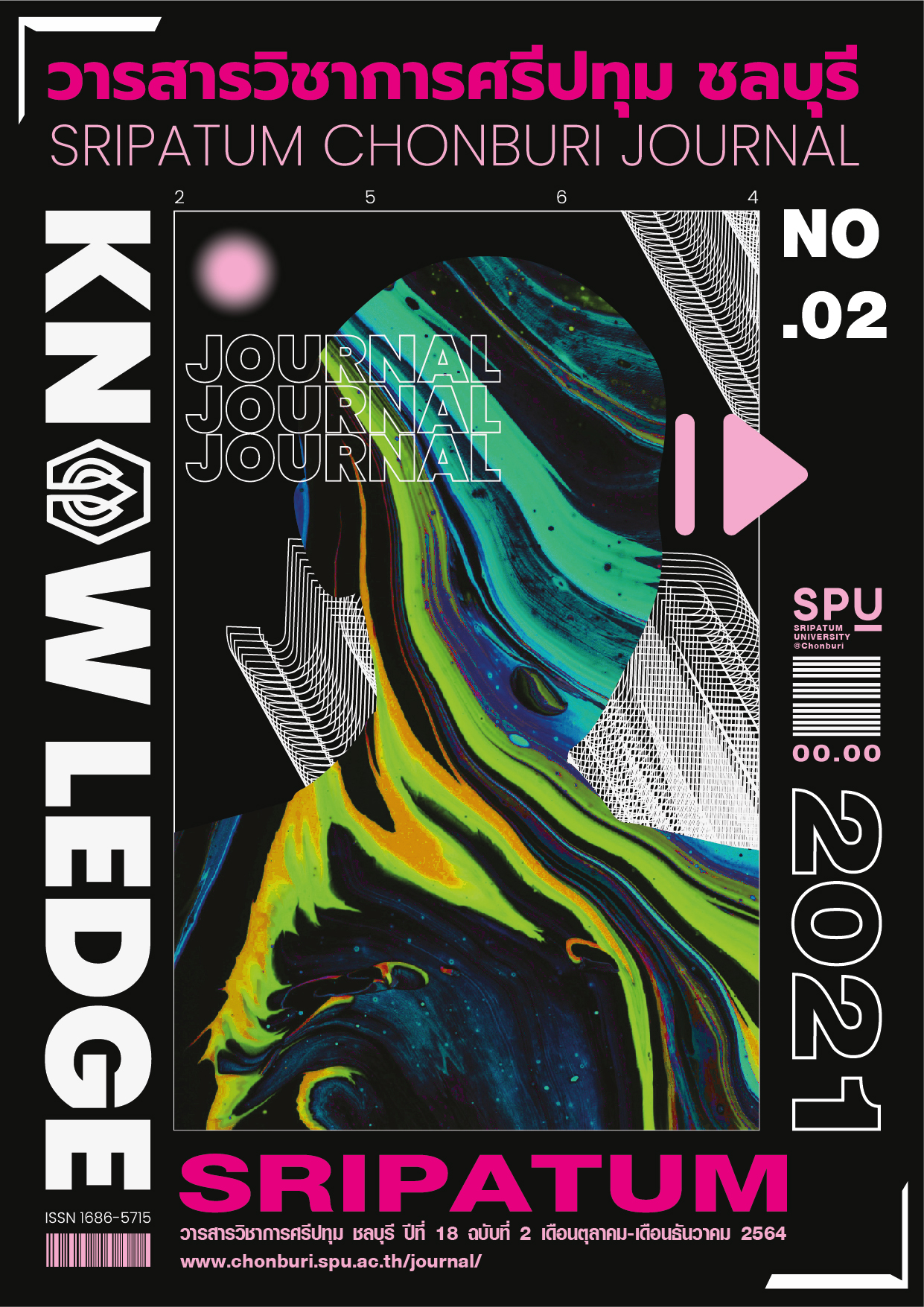รูปแบบความผูกพันและพฤติกรรมการจัดการความขัดแย้ง ในความสัมพันธ์แบบโรแมนติกของนักศึกษา
คำสำคัญ:
รูปแบบความผูกพัน, การจัดการความขัดแย้ง, นักศึกษาบทคัดย่อ
การวิจัยนี้เป็นการวิจัยเชิงสำรวจ (survey research) มีวัตถุประสงค์เพื่อศึกษารูปแบบความผูกพันของนักศึกษา และรูปแบบการจัดการความขัดแย้งในความสัมพันธ์แบบโรแมนติกของนักศึกษา โดยใช้แบบสอบถาม (questionnaire) เป็นเครื่องมือในการเก็บข้อมูล ผู้วิจัยเก็บข้อมูลจากกลุ่มตัวอย่างซึ่งเป็นนักศึกษามหาวิทยาลัยราชภัฏสวนสุนันทา จำนวน 415 คน โดยใช้วิธีการสุ่มตัวอย่างแบบผสมผสาน คือการสุ่มแบบแบ่งชั้นและการสุ่มแบบบังเอิญ และใช้สถิติวิเคราะห์ความแปรปรวนพหุคูณแบบทางเดียว (one-way MANOVA) เพื่อทดสอบสมมติฐาน พบว่านักศึกษาที่มีรูปแบบความผูกพันแบบมั่นคง จัดการความขัดแย้งแบบบูรณาการมากกว่านักศึกษาที่มีรูปแบบความผูกพันแบบกังวล ทะนงตน และหวาดกลัว และนักศึกษาที่มีรูปแบบความผูกพันแบบมั่นคง จัดการความขัดแย้งแบบประนีประนอมมากกว่านักศึกษาที่มีรูปแบบความผูกพันแบบทะนงตนและหวาดกลัว และยังพบว่านักศึกษาที่มีรูปแบบความผูกพันแบบกังวล จัดการความขัดแย้งแบบยอมทำตามมากกว่านักศึกษาที่มีรูปแบบความผูกพันแบบทะนงตน
เอกสารอ้างอิง
สาขาวิชาจิตวิทยาการปรึกษา, บัณฑิตวิทยาลัย จุฬาลงกรณ์มหาวิทยาลัย.
มหาวิทยาลัยราชภัฏสวนสุนันทา. (2562). ระบบทะเบียนและประมวลผล: สถิติจำนวนนักศึกษาลงทะเบียน (ออนไลน์). เข้าถึงได้จาก: https://reg.ssru.ac.th/isqy12
[2563, 15 มิถุนายน].
วรัญญา วชิโรดม. (2549). รูปแบบความผูกพันและการแก้ปัญหาความขัดแย้งของนักศึกษาอาชีวศึกษา. วิทยานิพนธ์ศิลปศาสตรมหาบัณฑิต สาขาวิชาจิตวิทยาการปรึกษา,
บัณฑิตวิทยาลัย จุฬาลงกรณ์มหาวิทยาลัย.
สมบุญ จารุเกษมทวี. (2544). ความสัมพันธ์ระหว่างรูปแบบความผูกพัน ความวิตกกังวล และกลวิธีการเผชิญปัญหาของนักศึกษา. วิทยานิพนธ์ศิลปศาสตรมหาบัณฑิต สาขาวิชา
จิตวิทยาการปรึกษา, บัณฑิตวิทยาลัย จุฬาลงกรณ์มหาวิทยาลัย.
Bartholomew, Kim, & Horowitz, Leonard M. (1991). Attachment styles among young adults: A test of a four-category model. Journal of Personality
and Social Psychology, 61(2), pp. 226-244.
Ben-Ari, Rachel, & Hirshberg, Itzhak. (2009). Attachment styles, conflict perception, and adolescents’ strategies of coping with interpersonal conflict.
Negotiation Journal, 25(1), pp. 59-82.
Bippus, Amy M., & Rollin, Emma. (2003). Attachment style difference in relational maintenance and conflict behaviors: Friends’ perceptions.
Communication Reports, 16(2), pp. 113-123.
Boonsathorn, Wasita. (2007). Understanding conflict management styles of Thais and Americans in multinational corporations in Thailand.
International Journal of Conflict Management, 18(3), pp. 196-221.
Caughlin, J. P., & Vangelisti, A. L. (2006). Conflict in dating and marital relationships. In J. G. Oetzeland, & Stella Ting-Toomey (Eds.), The SAGE
handbook of conflict communication: Integratingtheory, research, and practice (pp. 129-157). Thousand Oaks, CA: Sage.
Creasey, Gary, & Hesson-McInnis, Matthew. (2001). Affective responses, cognitive appraisals, and conflict tactics in late adolescent romantic
relationships: Associations with attachment orientations. Journal of Counseling Psychology, 48(1), pp. 85-96.
Faul, Franz, et al. (2009). Statistical power analyses using G*Power 3.1: Tests for correlation and regression analyses. Behavior Research Methods,
41(4), pp. 1149-1160.
Feeney, Judith A. (1999). Adult attachment, emotional control, and marital satisfaction. Personal Relationships, 6(2), pp. 169-185.
Larson, Reed W., Clore, Gerald L., & Wood, Gretchen A. (1999). The emotions of romantic relationships: Do they wreak havoc on adolescents?. In W.
Furman, B. B. Brown, & C. Feiring (Eds.), The development of romantic relationships in adolescence (pp. 19-49). Cambridge, UK: Cambridge
University Press.
Pistole, M. Carole. (1989). Attachment in adult romantic relationships: Styles of conflict resolution and relationship satisfaction. Journal of Social and
Personal Relationships, 6(4), pp. 505-510.
ดาวน์โหลด
เผยแพร่แล้ว
ฉบับ
ประเภทบทความ
สัญญาอนุญาต
บทความทุกบทความเป็นลิขสิทธิ์ของวารสารวิชาการศรีปทุม ชลบุรี



